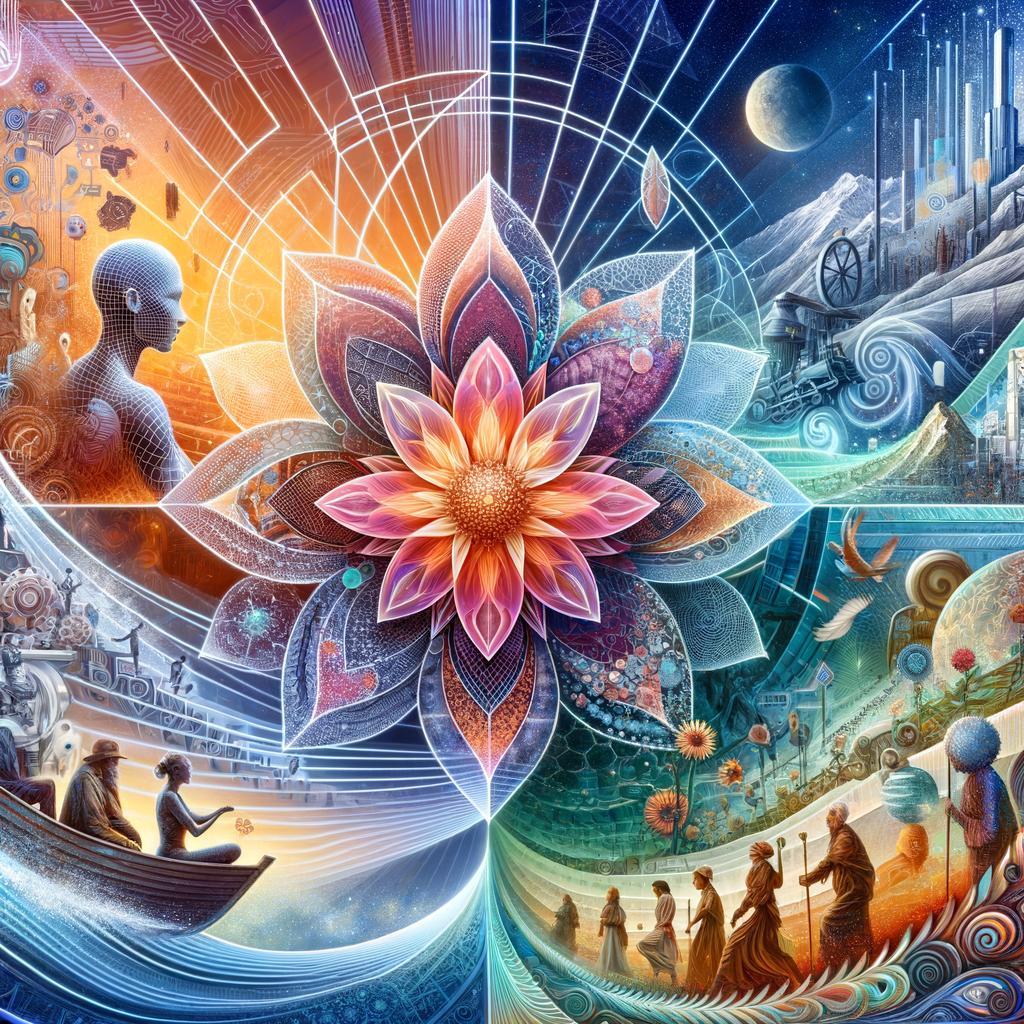“Exploring Global Beauty Secrets: What Cultures Can Teach Us”
In a world brimming with diverse cultures and traditions, the pursuit of beauty has always held a special place in our collective consciousness. From the sun-drenched shores of the Mediterranean to the lush landscapes of Asia, each culture boasts its unique set of practices and secrets that have been passed down through generations. These time-honored rituals often reveal not just a quest for aesthetic appeal but also a profound connection to identity, heritage, and even spirituality. In this article, we embark on a journey to explore global beauty secrets, uncovering the wisdom that various cultures can impart. By delving into these rich traditions, we aim to celebrate the multifaceted nature of beauty and discover how embracing diverse practices can enrich our own understanding of self-care, wellness, and personal expression. Join us as we traverse the globe in search of enlightening beauty wisdom waiting to be shared.
Unveiling Ancient Rituals: The Timeless Practices Behind Global Beauty
Across the globe, ancient rituals have woven their way into the fabric of beauty practices, often embodying deeper cultural significance and traditional wisdom. From the intricate Henna designs in South Asia to the ancient Egyptian use of kohl, these rituals not only enhance physical appearance but also connect individuals to their heritage. Each practice serves as a testament to the creativity and resourcefulness of different cultures, allowing us to explore beauty beyond mere aesthetics. Here are some notable ancient beauty practices:
- Rose Water in Persia: Used in rituals and skincare, rose water symbolizes purity and is believed to enhance mood.
- Seaweed Baths in Japan: Known for their detoxifying properties, these baths are part of an age-old tradition of embracing nature’s nutrition.
- Coconut Oil in India: Applied for centuries for hair nourishment, it doubles as a cooking oil, emphasizing the link between beauty and wellness.
These rituals often involve the use of natural ingredients, passed down through generations, highlighting the innate human desire to connect with the Earth and its gifts. For instance, traditional African Shea Butter preparation processes reflect a community-centered approach that values cooperation and sustainability. A closer examination reveals not just the methods but also the meanings attached to these rituals, which can be categorized into distinct themes:
| Theme | Example |
|---|---|
| Ritualistic Care | Japanese tea ceremonies promoting mindfulness and beauty |
| Nourishing Elements | Brazilian Açai pulp used for skin rejuvenation |
| Spiritual Practices | Mexican Day of the Dead rituals incorporating beauty offerings |
Nature’s Apothecary: Harnessing Local Ingredients for Radiant Skin
From the lush fields of Provence to the sun-kissed coast of Bali, every culture boasts unique local ingredients that can elevate skincare regimes to new heights. These natural treasures are often steeped in tradition and can offer results that synthetic products sometimes struggle to match. For instance, French lavender is renowned not just for its fragrance but also for its calming and skin-healing properties, making it a staple in many skincare formulations. Similarly, the coconut oil cherished in Balinese rituals serves as a deeply hydrating emollient that can retain moisture and improve skin elasticity.
In the pursuit of radiant skin, it’s essential to explore the versatility of nature’s bounty. Ingredients such as Indian turmeric are celebrated not only for their vibrant hue but also for their anti-inflammatory and brightening effects, often incorporated into pastes and masks for a natural glow. To highlight the global variety, consider the following natural ingredients and their benefits in the table below:
| Ingredient | Origin | Benefits |
|---|---|---|
| Lavender | France | Calming, anti-inflammatory |
| Coconut Oil | Bali | Hydrating, antibacterial |
| Turmeric | India | Brightening, anti-inflammatory |
| Honey | Global | Antimicrobial, moisturizing |
Cultural Influences: How Traditions Shape Contemporary Beauty Standards
Throughout history, various cultures have established distinctive beauty ideals that reflect their unique values, beliefs, and environments. These ideals are often steeped in tradition, passed down through generations, and influence how members of the culture perceive themselves and each other. For instance, in many Asian cultures, smooth skin and a bright complexion are often celebrated as symbols of beauty. This preference is deeply rooted in historical perceptions of prosperity and social status. On the other hand, traditional African cultures may celebrate fuller body types as a sign of health and wealth, showcasing how economic conditions and ecological variables shape the view of beauty.
Moreover, beauty standards are not static; they evolve as cultures interact and blend through globalization. Social media platforms now serve as a melting pot for beauty ideals, where trends can transcend borders, yet the essence of local traditions remains influential. The contrast of traditional versus contemporary notions is evident in practices such as the use of *kohl* in Middle Eastern cultures, which not only enhances the eyes but also carries spiritual significance. Similarly, the ancient practice of *Ayurvedic skincare* in India emphasizes natural ingredients and holistic wellness, reflecting a deeper connection to nature. As we explore these diverse perspectives, we recognize the profound impact that cultural traditions continue to have on contemporary beauty standards.
Mindfulness and Beauty: The Intersection of Wellness and Aesthetic Care
In the pursuit of beauty, many cultures have intertwined the practices of skincare and wellness, creating a holistic approach that embraces both the physical and mental aspects of self-care. For instance, traditional Japanese beauty rituals often include a meditative element, where skincare routines are transformed into mindful practices, promoting relaxation and inner peace. The art of Shinrin-yoku, or forest bathing, exemplifies this connection by encouraging individuals to immerse themselves in nature, thus nourishing not only the skin but also the soul. As we explore these global practices, we discover that beauty transcends mere aesthetics; it becomes a path to self-discovery and mindfulness.
Furthermore, beauty secrets from various cultures often highlight the importance of natural ingredients that are harmonious with our bodies. In South Korea, the famed 10-step skincare routine is not merely about layering products but also about taking time each day for oneself—a ritual that fosters self-love and care. Similarly, the use of Indian Ayurvedic practices emphasizes the significance of balance, integrating skincare with herbal treatments and meditation. These varied approaches reveal a tapestry of traditions where wellness and aesthetic care are not separate pursuits but rather a unified philosophy that celebrates the beauty of being present.
To Wrap It Up
As we conclude our exploration of global beauty secrets, it’s clear that the rituals and traditions of different cultures offer us a treasure trove of wisdom. From the soothing embrace of South Korean skincare routines to the vibrant, natural remedies cherished by indigenous communities, the diverse practices around the world remind us that beauty is not merely skin-deep. It is a celebration of heritage, a blend of nature and nurture, and a reflection of individuality.
In a world increasingly focused on standards set by mass media, we invite you to embrace the uniqueness of beauty as seen through different lenses. Let us appreciate the stories behind each method, the traditions passed down through generations, and the simple yet profound ways people enhance their natural selves.
As you continue your own journey of self-care and beauty, remember that the secrets shared across cultures are not just about looking beautiful—they’re about feeling connected, both to ourselves and to the world around us. So, open your mind, indulge your senses, and let these global beauty secrets inspire a more holistic, inclusive approach to how we view ourselves and each other. After all, beauty is a universal language, spoken in many dialects, each with its own unique charm.













Post Comment